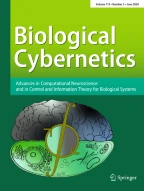Abstract.
Synaptic plasticity is believed to underlie the formation of appropriate patterns of connectivity that stabilize stimulus-selective reverberations in the cortex. Here we present a general quantitative framework for studying the process of learning and memorizing of patterns of mean spike rates. General considerations based on the limitations of material (biological or electronic) synaptic devices show that most learning networks share the palimpsest property: old stimuli are forgotten to make room for the new ones. In order to prevent too-fast forgetting, one can introduce a stochastic mechanism for selecting only a small fraction of synapses to be changed upon the presentation of a stimulus. Such a mechanism can be easily implemented by exploiting the noisy fluctuations in the pre- and postsynaptic activities to be encoded. The spike-driven synaptic dynamics described here can implement such a selection mechanism to achieve slow learning, which is shown to maximize the performance of the network as an associative memory.
Similar content being viewed by others
Author information
Authors and Affiliations
Additional information
Received: 18 May 2002 / Accepted: 15 July 2002
Acknowledgements. Most of the work described in the first part of this manuscript was carried out in the group coordinated by D.J. Amit in Rome, in the context of the LANN initiative of INFN (see the cited works for more details). I would like to thank W. Gerstner, G. La Camera, S. Liu, A. Renart, and W. Senn: with their remarks they contributed to greatly improving a previous version of the manuscript.
Correspondence to: (e-mail: fusi@cns.unibe.ch, Tel.: +41-31-6318778, Fax: +41-31-6314611)
Rights and permissions
About this article
Cite this article
Fusi, S. Hebbian spike-driven synaptic plasticity for learning patterns of mean firing rates. Biol Cybern 87, 459–470 (2002). https://doi.org/10.1007/s00422-002-0356-8
Issue Date:
DOI: https://doi.org/10.1007/s00422-002-0356-8

